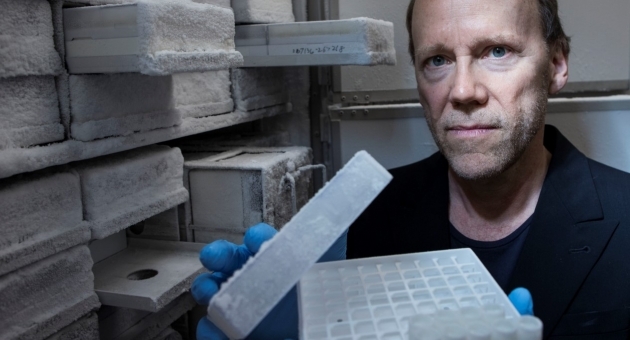SERC professor works to preserve Haitian biodiversity

Haiti has been ravaged by natural disasters, including several earthquakes and floods in recent years. Now Haiti is facing another catastrophe—the extinction of forests, including trees and other plants as well as animal life.
Temple biologist S. Blair Hedges, director of the Center for Biodiversity and Laura H. Carnell Professor of Biodiversity, is working to preserve Haiti’s biodiversity in a cryobank located at Temple’s new Science Education and Research Center (SERC), which opened its doors this month.
Hedges and his team collect plant and animal tissue in Haiti and store it in the cryobank in the hopes that if a species in Haiti goes extinct, they can use the DNA in the cryobank to re-create the lost animal and plant life.
“Haiti has lost 99 percent of its original forest, and the last small areas are now being destroyed,” he said. “Some of the wood is being used for building material, but the use of wood for cooking fuel is the major reason for deforestation.” While most of the world uses natural gas for cooking, due to a lack of resources, Haitians use charcoal created from forest wood.
Because of continuous cutting, most of Haiti—including the national forest—is now treeless. “Haiti is ground zero for species extinction,” Hedges said. “If the trees are gone, then the life-forms that depend on them cannot survive.
“It isn’t too late to change this pattern,” said Hedges. “But it will require an immediate end to deforestation followed by efforts to restore the forest.”
The work of Blair and his team to save Haiti’s biodiversity has been documented in the film Extinction in Progress. The film follows Hedges and a team of American and Haitian researchers and scientists as they travel by car, boat and helicopter and on foot to one of the most remote regions in Haiti, where patches of natural forests remain, in order to investigate the current state of biodiversity on the island.
“Today a considerable part of Haiti’s biodiversity is considered endangered. No other country has more amphibians threatened by extinction,” said Hedges.
The documentary project, which was a combined effort by Haiti’s government, Haiti Audubon Society, Hedges and the Philadelphia Zoo, concluded in the creation of a breeding program for Haiti’s highly endangered amphibians and a cryobanking program. During the process of creating the film, Hedges’ team also located several species thought for decades to be lost.